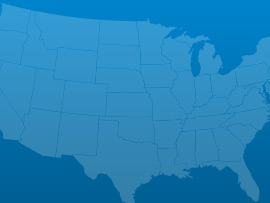Safe and adequate water supplies and treatment are critical to the future and economy of Arizona, the 4th driest state in the nation. Arizona’s drinking water comes 4 sources – the Colorado River, surface water from lakes and rivers, groundwater, and reclaimed water— and is delivered by nearly 1,700 public water systems which must be maintained and upgraded to meet current and future demands. Much of Arizona’s water infrastructure is over 30 years old, and one of the challenges facing Arizona’s water infrastructure is the need to rehabilitate or replace deteriorating infrastructure. The state’s approximately 800 community water systems reported a need of $7.4 billion for Arizona’s public drinking water systems over the next 20 years including: $5 billion to replace or rehabilitate deteriorating water lines, $1.4 billion to construct, expand, and rehabilitate treatment infrastructure, $684 million to construct or rehabilitate water storage reservoirs, and $334 million to construct or rehabilitate wells or surface water intake structures. As the water infrastructure ages, pipes begins to deteriorate and break causing street and property damage and leak, wasting valuable treated water; steel water storage tanks need to be sand blasted and recoated to prevent rust and deterioration; and mechanical equipment such as pumps and motors wearing out and needing to be replaced. Over 2,600 miles of transmission and distribution mains are currently in need of rehabilitation or replacement.
 Aviation
Aviation Bridges
Bridges Dams
Dams Drinking Water
Drinking Water Levees
Levees Rail
Rail Roads
Roads Transit
Transit Wastewater
WastewaterA: Exceptional, B: Good, C: Mediocre, D: Poor, F: Failing, ?: Incomplete
Each category was evaluated on the basis of capacity, condition, funding, future need, operation and maintenance, public safety, resilience, and innovation
Bridges
238 of the 7,862 bridges are structurally deficient
Bridges
$19.50 million in bridge funds came from the Federal Highway Bridge Fund in 2011
Dams
89% of the state regulated dams have an Emergency Action Plan
Dams
108 high hazard dams
Drinking Water
$7.4 billion in drinking water infrastructure needs over the next 20 years
Energy
6.941 gigawatt-hours of renewable energy every year, ranking it 14th
Hazardous Waste
9 sites on the National Priorities List
Levees
1,293 miles of levees
Public Parks
$377.0 million of unmet needs for its parks system
Rail
10 freight railroads covering 1,683 miles across the state, ranking 36th nationally by mileage
Roads
$1.2 billion a year in costs to motorists from driving on roads in need of repair, which is $247 /yr per motorist
Roads
7,190 of the state’s 65,262 public roads are major roads, and 7% are in poor condition
Schools
$6.4 billion in estimated school infrastructure funding needs
Transit
90.3 million annual unlinked passenger trips via transit systems including bus, transit, and commuter trains
Wastewater
$5.2 billion in wastewater infrastructure needs over the next 20 years

March 03, 2017
As the President’s repeated in his address to Congress his pledge to dramatically increase infrastructure spending to the tune of $1 trillion, various Congressional Committees

March 01, 2017
On Tuesday night, President Trump addressed a joint-session of Congress for the first time in his presidency. Infrastructure was among the many issues he discussed.

February 28, 2017
U.S. motorists set a new record for vehicle miles travelled (VMT) in 2016, driving over 3.2 trillion miles, an increase of 70 billion miles from

February 17, 2017
Romantic dates, the Grammy awards and celebrating black history are not the only milestones of this week; the Oroville dam crisis in California and the